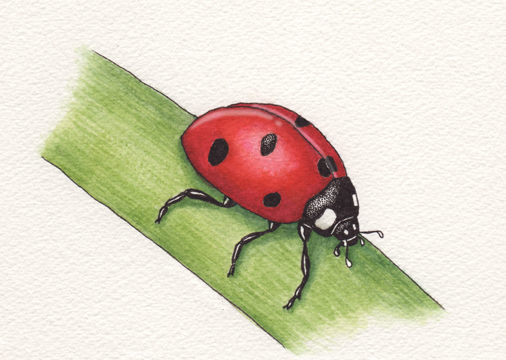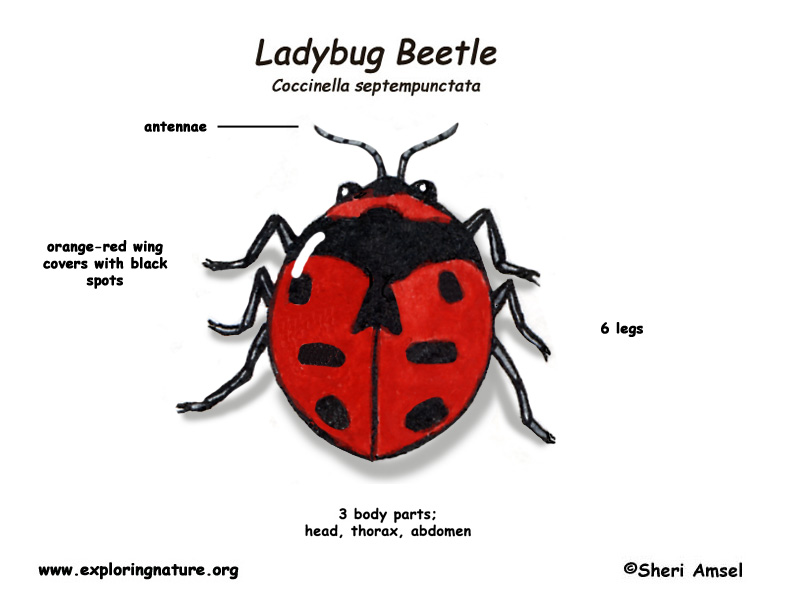

There are many kinds of ladybugs found all over North America.
They live in fields, yards, gardens and inside homes.
They have hard, orangey-red wing covers with black spots.
They hibernate under rocks and logs (or in homes) in the winter. The 12-spotted ladybug and others are poisonous. When bothered, they push blood out through their joints that has toxins in it that smells and tastes bad.
They eat insects, mostly aphids.
Females lay yellow-orange eggs in groups on plants with aphids. The young hatch in less than a week and start eating.
Kingdom: Animalia
Phylum: Arthropoda
Class: Insecta
Order: Coleoptera
Suborder: Polyphaga
Family: Coccinellidae
Genus: Coccinella
Species: C. septempunctata
When you research information you must cite the reference. Citing for websites is different from citing from books, magazines and periodicals. The style of citing shown here is from the MLA Style Citations (Modern Language Association).
When citing a WEBSITE the general format is as follows.
Author Last Name, First Name(s). "Title: Subtitle of Part of Web Page, if appropriate." Title: Subtitle: Section of Page if appropriate. Sponsoring/Publishing Agency, If Given. Additional significant descriptive information. Date of Electronic Publication or other Date, such as Last Updated. Day Month Year of access < URL >.
Amsel, Sheri. "Ladybug Beetle (Ladybug)" Exploring Nature Educational Resource ©2005-2024. December 13, 2024
< http://www.exploringnature.org/db/view/263 >

